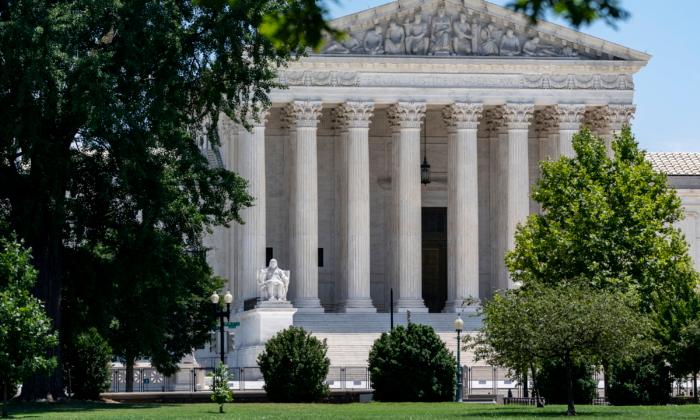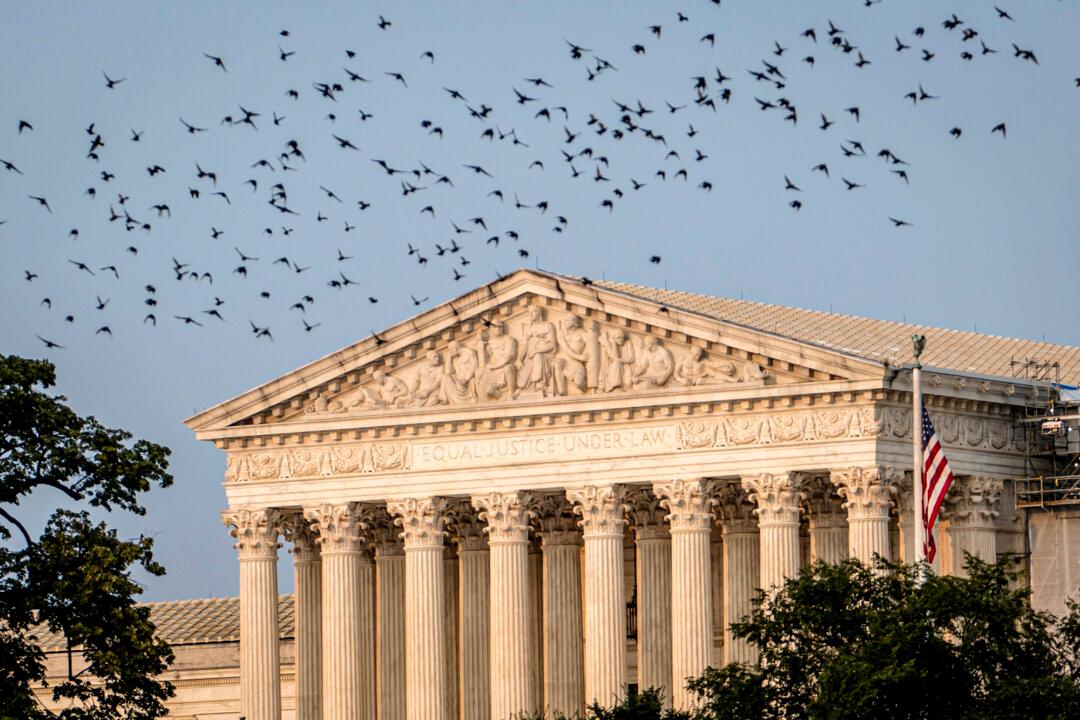Lawyers for the plaintiffs in an upcoming Supreme Court case are upbeat about their challenge to the U.S. Environmental Protection Agency’s long-controversial claim that the presence of surface water on private property makes it a protected wetland subject to federal regulations.
The case, Sackett v. EPA, is scheduled for oral argument on Oct. 3.
A ruling against the EPA could limit the reach of the Clean Water Act and allow Americans to relieve pressure on the housing market by building more new houses without becoming entangled in federal bureaucracy. Property rights supporters are encouraged by the fact that in June the court curbed the regulatory reach of the EPA in climate change policy.
Chantell and Mike Sackett had started building a new home in Priest Lake, Idaho, when the EPA and Army Corps of Engineers suddenly ordered them to stop all work. The two government agencies said they needed a federal permit and threatened more than $30,000 in daily fines. The EPA had determined years before that their parcel of land contained wetlands. The Sacketts say their lot lacks a surface water connection to any stream, creek, lake, or other water body, and it shouldn’t be subject to federal regulation and permitting.
The Supreme Court previously heard the Sacketts’ case and ruled 9-0 against the EPA in 2012, but that decision dealt only with the married couple’s ability to bring the case. The court found at that time that the Sacketts could move forward with a civil action under the federal Administrative Procedure Act to contest the issuance of the EPA’s order over their homebuilding project.
The Sacketts are asking the Supreme Court to revisit its 2006 ruling in Rapanos v. United States, which was a fractured plurality decision that created uncertainty about the applicable legal standard. Led by the late Justice Antonin Scalia, four of the nine justices found that the Clean Water Act regulates a wetland only if it has a continuous surface connection to another waterway. Then-Justice Anthony Kennedy devised his own legal test, finding that the law covers wetlands that have a “significant nexus” to a larger body of water.
Damien Schiff is a senior attorney at Pacific Legal Foundation (PLF), a Sacramento, Calif.-based national public interest law firm that represents the couple. Schiff will be arguing the case next week before the Supreme Court.
“We have grounds to be optimistic,” Schiff told The Epoch Times in an interview.
“Part of it is simply the mere fact that the court agreed to take the case,” he said.
“I think what happened after Rapanos, which was 16 years ago, is the court thought, ‘Well, we weren’t able to come up with a clear decision by a majority of the court, but let’s see how things shake out.’”
“And so, over the course of the last decade and a half, you’ve had the agencies issuing guidance documents—they’ve gone through three or four rulemakings. You’ve had a lot of litigation, and after that long period, nothing has improved. People are still just as confused. You still have all the same sort of abuses of agency power that you had before Rapanos,” Schiff said.
“I think the majority of the court must think that that’s not good and that, therefore, it’s time to try again. The mere fact that they agreed to take up the Sacketts’ case, again, is an indication that at the very least they acknowledge there is a problem. And if they want to fix it, then in our view, that means that they want to fix it in the right way.”
Schiff noted that of the four justices that were part of the Rapanos plurality, three are still on the court—Chief Justice Roberts, Justices Clarence Thomas, and Samuel Alito. Presumably the three justices’ views on the issue haven’t changed, the attorney said.
Since then, former President Donald Trump added three conservative justices to the court—Justices Neil Gorsuch, Brett Kavanaugh, and Amy Coney Barrett.
The Biden administration has urged the court to adopt the nexus standard articulated by Kennedy.





